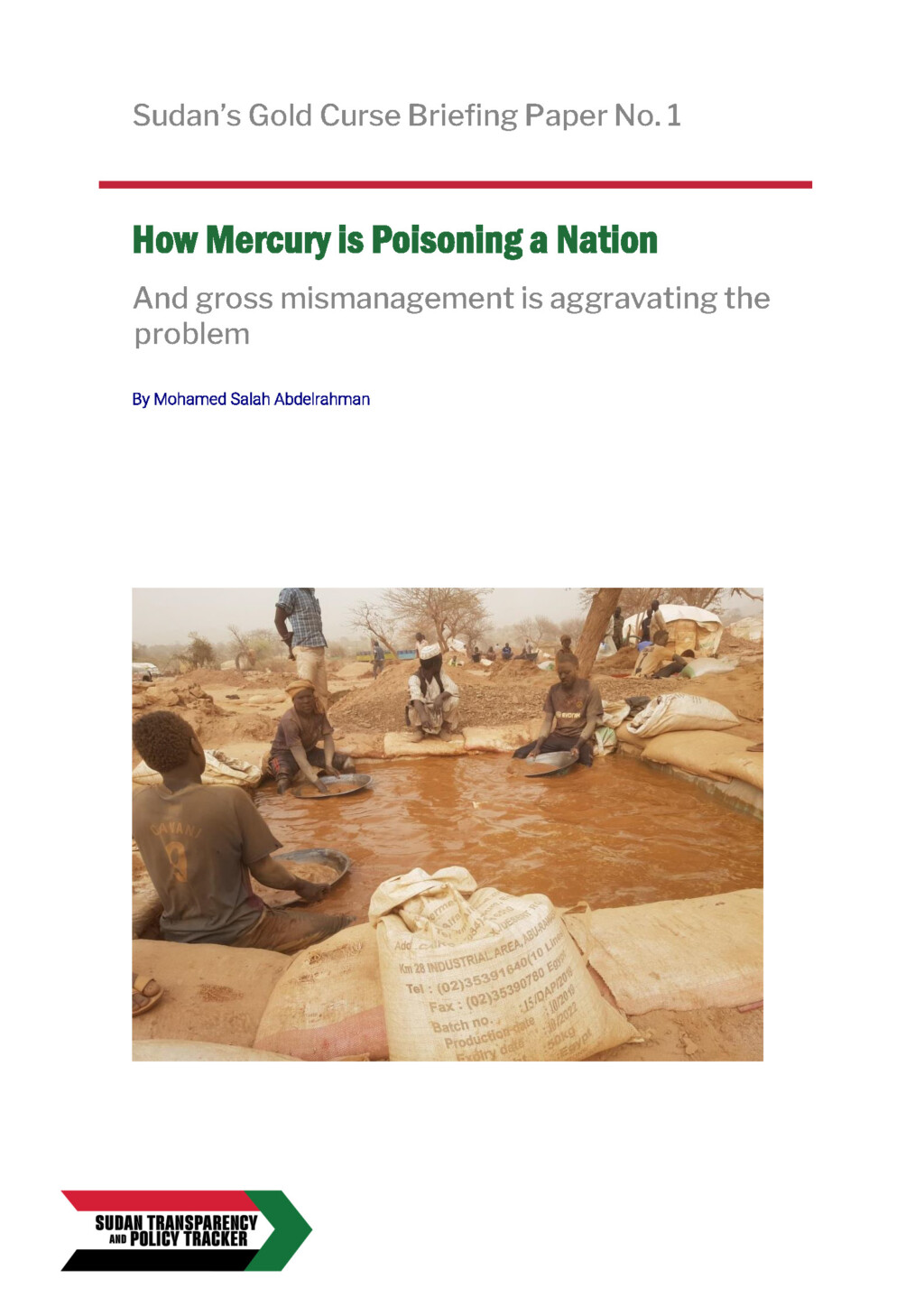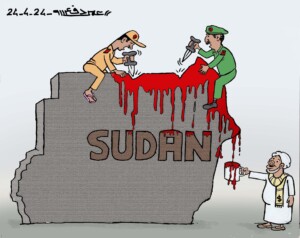Sudan Transparency and Policy Tracker: How mercury is poisoning a nation
In the first week of August, flash floods swept through more than 25 villages north of Atbara in Sudan’s River Nile state. The floods swept thousands of metric tons of mercury-contaminated mining residue into the Nile in a disaster that echoes the health and environmental threats that haunt communities in traditional gold mining areas across Sudan. A new briefing entitled How mercury is poisoning a nation by Mohamed Salah Abdelrahman for the Sudan Transparency and Policy Tracker (STPT), points out that “years of indiscriminate use of dangerous chemicals such as mercury, cyanide, and thiourea without protective measures for miners or local populations has exposed millions of citizens across Sudan to lethal risks”.

In the first week of August, flash floods swept through more than 25 villages north of Atbara in Sudan’s River Nile state. The floods swept thousands of metric tons of mercury-contaminated mining residue into the Nile in a disaster that echoes the health and environmental threats that haunt communities in traditional gold mining areas across Sudan. A new briefing entitled How mercury is poisoning a nation by Mohamed Salah Abdelrahman for the Sudan Transparency and Policy Tracker (STPT), points out that “years of indiscriminate use of dangerous chemicals such as mercury, cyanide, and thiourea without protective measures for miners or local populations has exposed millions of citizens across Sudan to lethal risks”.
The briefing asserts that successive governments have failed to compel private companies importing these materials to comply with required industrial and professional safety precautions. They have also failed to educate citizens on the necessary precautions to avoid harming themselves and their families. Much damage has already occurred, and the practices that expose citizens to such toxins must be remedied and corrected.
Sudan’s gold rush began around 2008-09 and saw the country’s declared gold production increase steeply from 10 tons in 2008 to 32 tons by 2010, to a peak of 107.3 tons by 2017. Based on the Ministry of Minerals’ statistics, an average of 80% of Sudan gold production during this growth period is delivered by the Artisanal and Small-Scale Gold Mining (ASGM) sector which uses mercury for gold extraction through panning and amalgamation. Global trade statistics of imports and exports of mercury captured in the United Nations’ Comtrade database identified Sudan as the largest importer of mercury in sub- Saharan Africa, with the country importing 38% of all sub-Saharan African imports during the period 2010-2015.
The government of Sudan has failed to tightly control the operations of importing, transporting, storing, using, and disposing of mercury due to its failure to exercise control and enforce minimum standards to safeguard the health of its citizens and the environment, with tragic consequences for both. This failure is a result of conflicts of interest within government structures and entities. International initiatives to promote alternatives for the use of mercury in the ASGM sector to reduce health and environmental risks, such as the one led by the United Nations Industrial Development Organization (UNIDO) in the Blue Nile state in 2007, haven’t generated the desired sustainable momentum, due largely to lack of follow up by the Ministry of Minerals to promote the technologies piloted during the project.
Using a ratio of 1.3:1 and the volume of gold produced, the World Bank (WB) estimated mercury consumption in Sudan during the eight-year period 2008-2015 to be 346 tons. During the same period, Sudan imported 336 tons of mercury. While the amount of Sudan’s officially declared imports roughly matches that of the WB at 36 tons per year from 2014 to 2020, other sources arrive at higher estimates of mercury use. Based on direct observation of the ASGM production cycle in Al-Ebeidiya and other mining areas, we and other researchers estimate the ratio of mercury used to be 10-12:1, which indicates that as much as 626 tons per year might be consumed, calculated on the basis of Sudan’s declared production volumes. The gap between the official imports and this could be coming from smuggling and undeclared imports from countries that do not declare their exports of mercury to the UN’s Comtrade.

Disclaimer: The views and opinions expressed in this article are those of the contributing media and/or author and do not necessarily reflect the position of Radio Dabanga.











 and then
and then